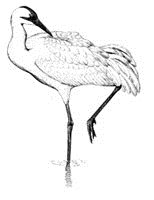North American Crane Working Group

Proceedings of the North American Crane Workshop
Date of this Version
2023
Document Type
Article
Citation
Proceedings of the North American Crane Workshop (2023) 16: 81–94
Abstract
Over-summering of migratory bird populations on wintering grounds may occur when individuals forgo migration and remain in non-breeding or wintering habitats. We summarized all reported instances of migratory whooping cranes (Grus americana) over-summering on the wintering grounds during 1891–2024. We report 9 individuals over-summering from the Eastern Migratory Population (EMP), 4 reports from Texas during 1891–1941, and between 1–4 individuals over-summering across 23 summers from the Aransas-Wood Buffalo Population (AWBP) post-1941. Although there were many instances of over-summering without clear proximate causes, some documented causes or contributing factors across both populations include injury, disease, death or injury of a mate, or unfamiliarity with the migration route or breeding grounds. We also report on instances of 4 remigial and 3 body molts on over-summering AWBP cranes. The remigial molt is of primary interest as whooping cranes become flightless during this period, resulting in potential increased depredation risk. We documented oversummering AWBP cranes using saltmarsh and freshwater wetlands, and EMP cranes using wetlands and flooded agricultural fields, similar to wintering individuals. As these endangered populations are still quite small, individuals missing breeding seasons or experiencing additional threats while over-summering is a potential concern for population recovery. However, forgoing migration and breeding may lead to increased survival or more productive future breeding attempts.


Comments
Copyright 2025, North American Crane Working Group. Used by permission